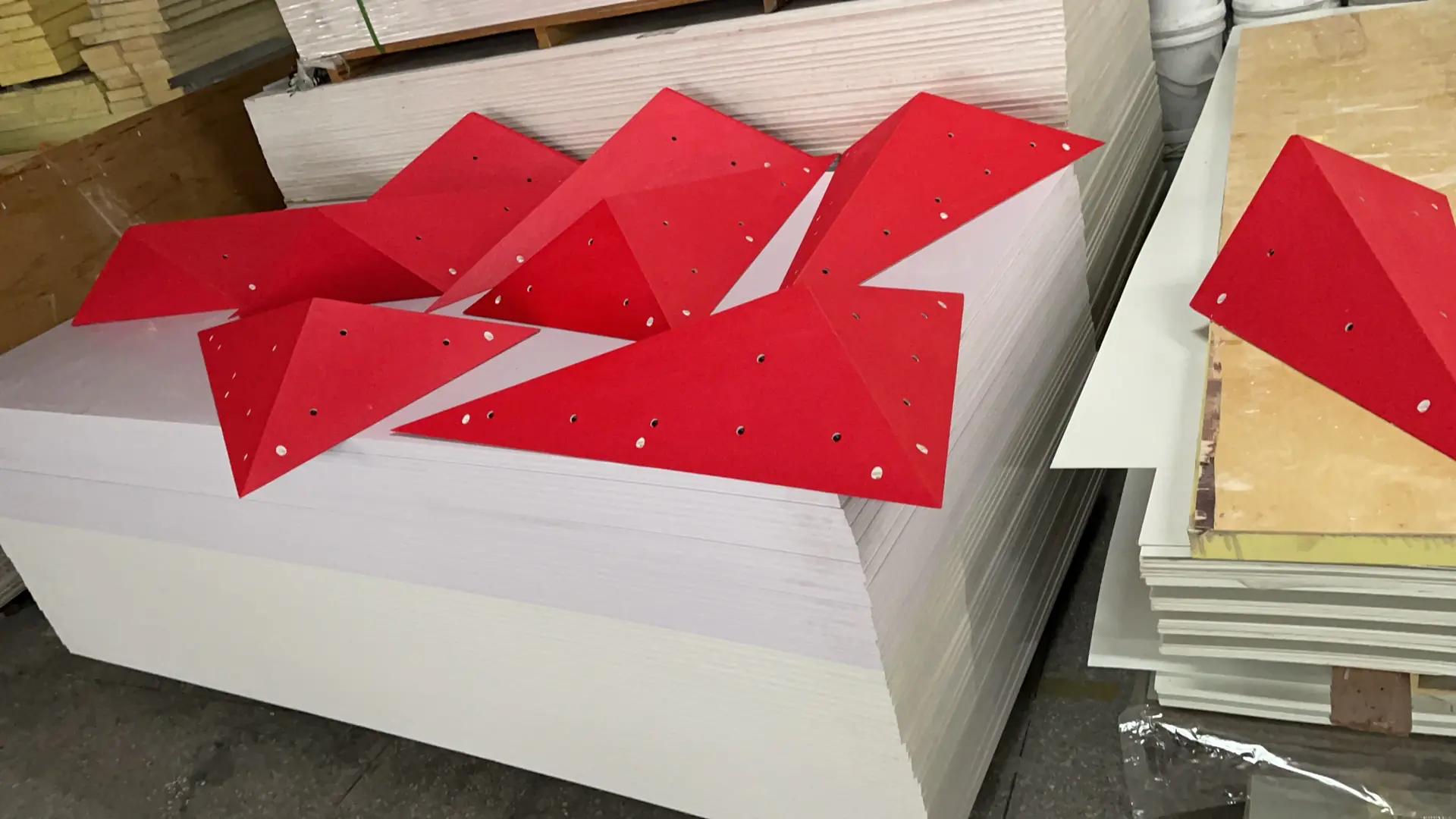

Have you ever noticed those amazing 3D shapes in climbing gyms? They turn flat walls into exciting puzzles. Each curve and angle combines smart engineering with creative design.
Table of contents
ToggleMaking professional climbing volumes requires four key skills:
Structural design
Material knowledge
Body-friendly shaping
Safety testing
These volumes come in many forms:
CNC-cut plywood triangles
Molded fiberglass caves
All must survive thousands of climbs while offering different challenges.
My first attempt was a simple wooden wedge. Physics quickly taught me a lesson – it broke during a basic move. That failure showed me angles do real work, not just look good.
Now I focus on three things for every volume:
Challenge – makes climbers think differently
Safety – holds 10 times a climber’s weight
Flexibility – adapts as routes change
Volumes require steel reinforcement for commercial use. True
Gym-grade volumes use internal steel frames to prevent catastrophic failure.
Fiberglass volumes can’t accommodate wooden holds. False
With threaded inserts, fiberglass accepts all standard hold types.
“Good volumes don’t just add holds—they rewrite movement vocabulary.”
Early in my design journey, I learned that 15° changes everything. A 30° slab teaches balance; a 45° overhang demands power; a concave curve forces creative hip positioning. My signature “Mantis Volume” combines three angles in one asymmetric shape, creating infinite climb variations.
Texture Gradient: Laser-engraved dimples on launch zones → smooth finish on technical slabs
T-Nut Philosophy: 8″ grid for standard holds + clustered “problem zones” for comp-style creativity
Transition Magic: Radiused edges where planes meet to enable fluid movement
After consulting with 12 gyms, I developed a modular connector system allowing:
Horizontal stacking (creating roofs)
Vertical nesting (building dihedrals)
Quick-rotation (changing features between sets)
| Material | Impact Resistance | Weight | Cost per SF | Best Use Case | Key Advantage |
|---|---|---|---|---|---|
| Aircraft Plywood | 8/10 | Heavy | $20 | Home walls, small features | Affordable & easy to modify |
| Fiberglass | 9/10 | Light | $55 | Commercial caves, large features | Unmatched strength-to-weight ratio |
Best Types: Marine-grade birch or oak-faced phenolic
Reinforcement Needed:
Steel L-brackets at all joints
2-part epoxy coating for moisture protection
Pro Tip: Route 1/8″ relief grooves on the backside to prevent warping
Layup Technique:
3-layer sandwich: Gelcoat → Chopped strand mat → Woven roving
45° fiber orientation for torsional strength
Mold Hack: Use CNC-cut foam positives for complex shapes
Hybrid Approach: Fiberglass skin over plywood core for mid-range projects
Salvage Trick: Repurpose discarded wind turbine blades (same fiberglass composition)
After 6 months in a busy gym:
Plywood volumes showed 2-3mm surface wear
Fiberglass maintained <0.5mm wear with identical usage
Plywood Secret: Soak Baltic birch in marine-grade epoxy for weather resistance
Fiberglass Hack: Use closed-cell foam cores to dampen vibration
Future Tech: 3D-printed carbon fiber lattice structures (coming 2025)
“If your volume can’t survive a 300lb dyno, it’s just wall art.”
Static Load Minimum: 3x climber weight (e.g., 600lbs for a 200lb climber)
Dynamic Load Minimum: 6x for falls (1,200lbs+)
Shear Force Hotspots: Corners and attachment points absorb 70% of stress
Internal Skeleton: 1″ steel square tubing for spans >36″
Skin Bonding: Fiberglass layers cross-laminated at 45° angles
Anchor Systems: Double-bolted with Grade 8 hardware + load-distributing backplates
My “Terminator Protocol”:
50 consecutive dynos by a 220lb climber
-20°F to 120°F temperature cycling
1-hour salt spray (simulating gym sweat)
“Certifications aren’t paperwork—they’re liability force fields.”
UIAA 125: Dynamic load testing for climbing equipment
EN 12572-3: Volume-specific structural requirements
ASTM F2974-20: Hold attachment point durability
✅ T-Nut Torque Test: 35 ft-lbs minimum
✅ Edge Radius: No sharpness detectable by 3mm gauge
✅ Chemical Safety: VOC-free coatings (tested via gas chromatography)
A client’s volume recall taught me:
Cause: Subpar resin in fiberglass layers → delamination under humidity
Fix: Now all materials get batch testing before fabrication
“A volume is only as good as its weakest bolt.”
Wall Compatibility: Confirm stud spacing matches volume anchors
Load Distribution: Use 1/4″ steel mounting plates to prevent wall damage
Alignment Tools: Laser levels for multi-volume installations
| Frequency | Task | Tool Kit |
|---|---|---|
| Weekly | Bolt tightness check | Torque wrench + Loctite |
| Monthly | Surface integrity inspection | UV flashlight (for cracks) |
| Annually | Full structural audit | Ultrasonic thickness gauge |
Mark high-wear areas with thermochromic paint—color changes indicate stress buildup before cracks form.
Building elite climbing volumes is equal parts architecture, materials science, and movement psychology. Whether you’re crafting a backyard training tool or an IFSC championship centerpiece, remember: the best volumes don’t just challenge fingers—they expand what climbers believe is possible.
Ready to shape the future of climbing? Start with these blueprints and send me your creations—I’ll feature the most innovative designs in my next guide.
All volumes require professional load testing. False
Small DIY volumes under 24″ can use calculated safety factors.
Plywood volumes can’t exceed 60° overhangs. True
Beyond this angle, steel reinforcement becomes mandatory.

Copyright © 2023-2025. All Rights Reserved.